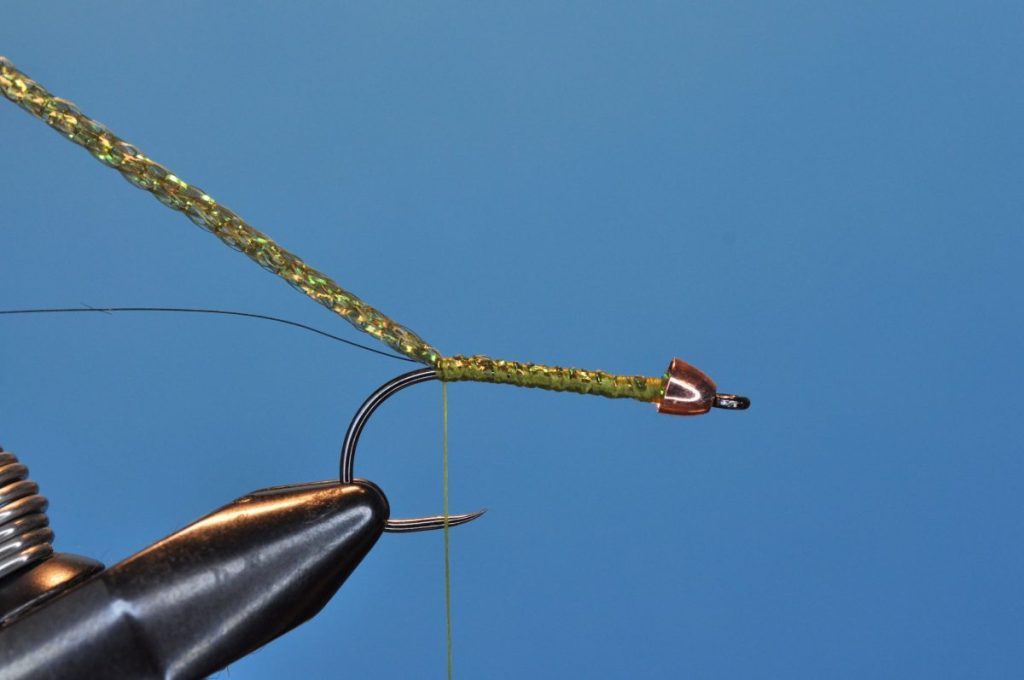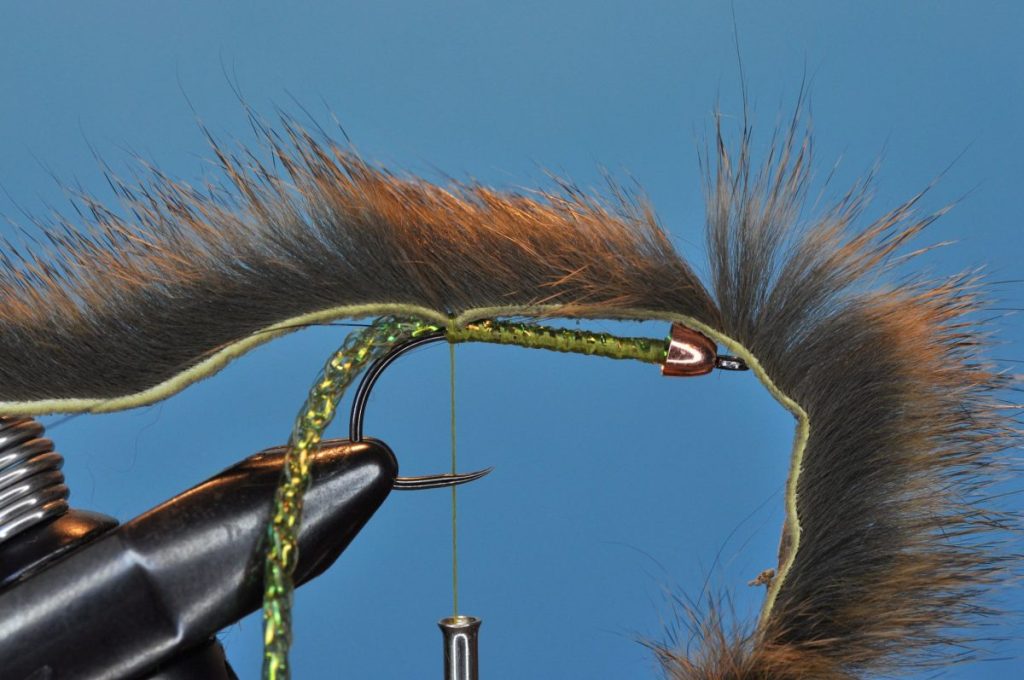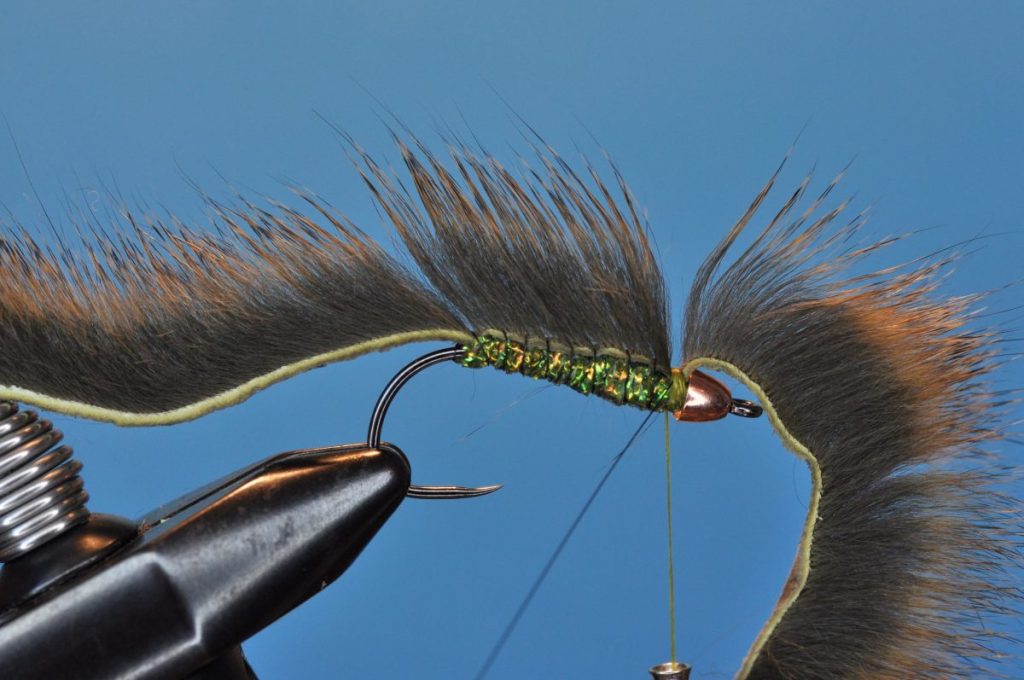
Looking for something else?
Try one of these!
Slump Buster Fly (Step-by-step):
A simple, yet effective, streamer pattern, Barr’s Slump Buster is a must have for every trout and warmwater angler’s box. Utilizing zonkered pine squirrel strips and a heavy conehead, this pattern gets deep quick and offers plenty of action in the water. Stripped, swung or dead-drifted, the Slump Buster is an enticing meaty morsel that fish can’t refuse.
Tied anywhere from a size 2 down to a size 10, and in a range of colors, this pattern can effectively mimic a variety of prey species.
| Materials: | ||
|---|---|---|
 Gamakatsu B10S (size 2-10) Gamakatsu B10S (size 2-10) |  Ultra Thread 70 Denier Ultra Thread 70 Denier |  Brass or Tungsten Conehead Brass or Tungsten Conehead |
 Zonkered Pine Squirrel Zonkered Pine Squirrel |  Zonkered Pine Squirrel / Flat Braid Zonkered Pine Squirrel / Flat Braid |  Zonkered Pine Squirrel Zonkered Pine Squirrel |
 Ultra Wire (Small) Ultra Wire (Small) |
Disclosure: This post contains affiliate links. A small commission may be paid for purchases made through these links.
Step-by-Step Tying Instructions:
(Click images to enlarge)








Tips and Tricks:
1. Double Up
If your rod can handle the load, try fishing this fly in tandem. John Barr, the fly’s creator, is said to fish it this way, and I’d recommend trusting him on the subject.
2. Shallow or Deep?
Consider how you’ll be fishing this fly before tying. Will you be fishing deep or battling fast currents? If so, a tungsten conehead and some wraps of lead-free wire might be the ticket. What about fishing shallow or high in the water column? Skip the lead-free wraps and substitute brass for tungsten.
3. Vary your retrieve
While Einstein may have never spoken the words, there’s truth to the “definition of insanity” for which he is credited. Doing the same thing over and over again while expecting different results is generally a fool’s errand. If the fly isn’t drawing strikes, don’t keep doing the same thing. Instead, try varying your retrieve. Twitch it, strip it, swing it, or bounce it off the bottom. Maybe even give a dead drift try. You might just save yourself from being skunked by doing so.
4. Match the Hatch
One thing that truly makes this fly versatile is its ability to potentially mimic so many prey species. In the right combination of size, color and retrieve, this pattern can be nearly anything.
Tie a few in rust or “crawdad” with lead-free wrap and a tungsten conehead, and you have a crayfish. Slowly twitching or bouncing the fly among the rocks is sure to entice a hungry smallmouth.
Swap olive for rust while upping your hook size and you have a great sculpin mimic. Swinging this version through the head of a deep pool is sure to entice a big brown.
Have a favorite baitfish in your local river or lake? Match the hatch with a constrasting dark Zonker over silver braid.
Better still, preparing for a long hike into your favorite stillwater? Slip a few Size 10 Olive Slump Busters into your fly box for a solid damselfly nymph mimic.
Proof of Concept:
While I’ve landed a number of fish on the Slump Buster pattern in the past, I’m afraid I don’t have any recent pictures as proof of concept. Olive in a size 6 (as shown) has been my go to in those instances, but I’m considering tying some smaller “crawdad” orange versions to test on the local fish in the coming months. If, and when, that happens, I’ll update this section accordingly.
Tight Lines Everyone!
Chris

